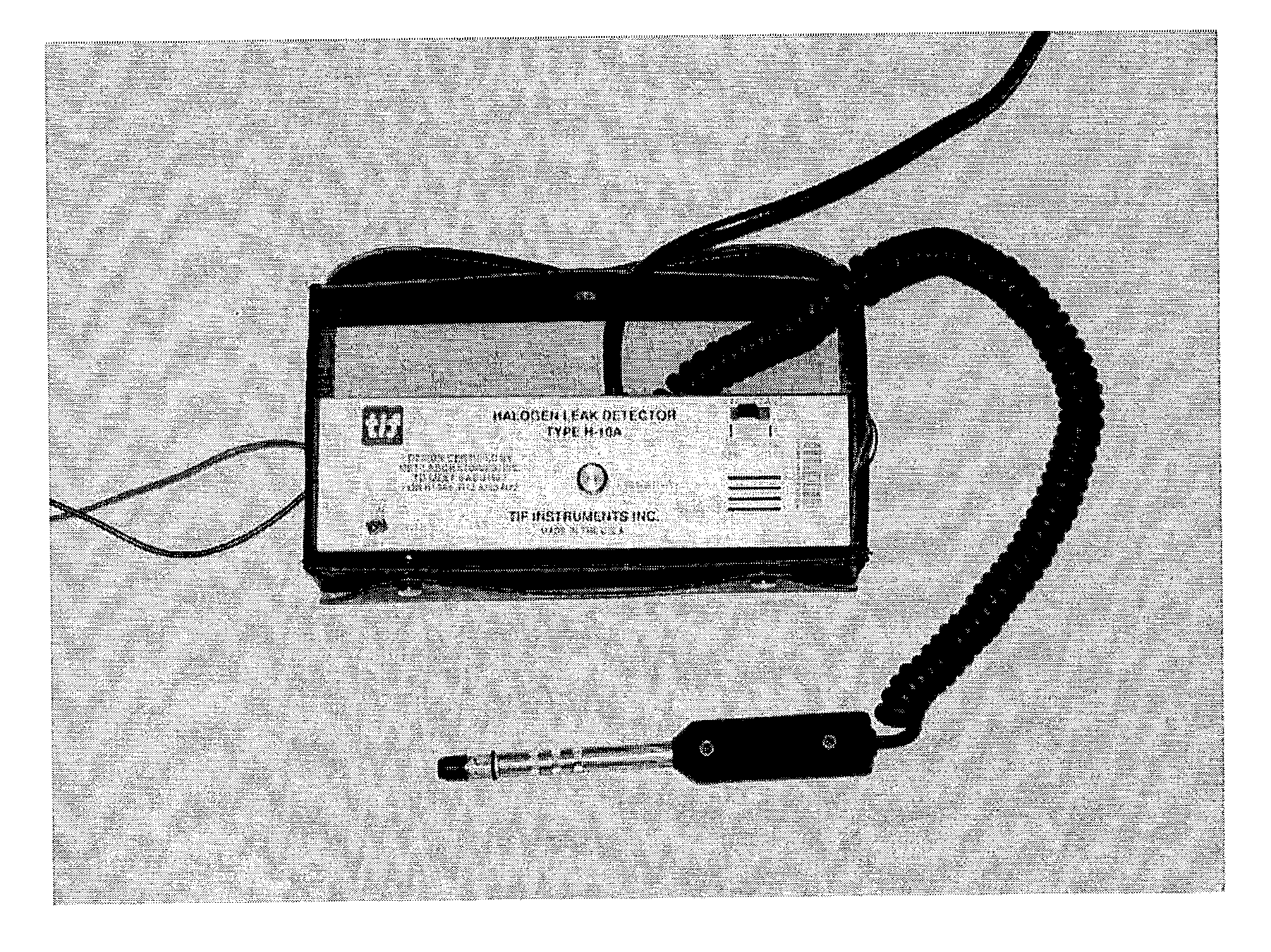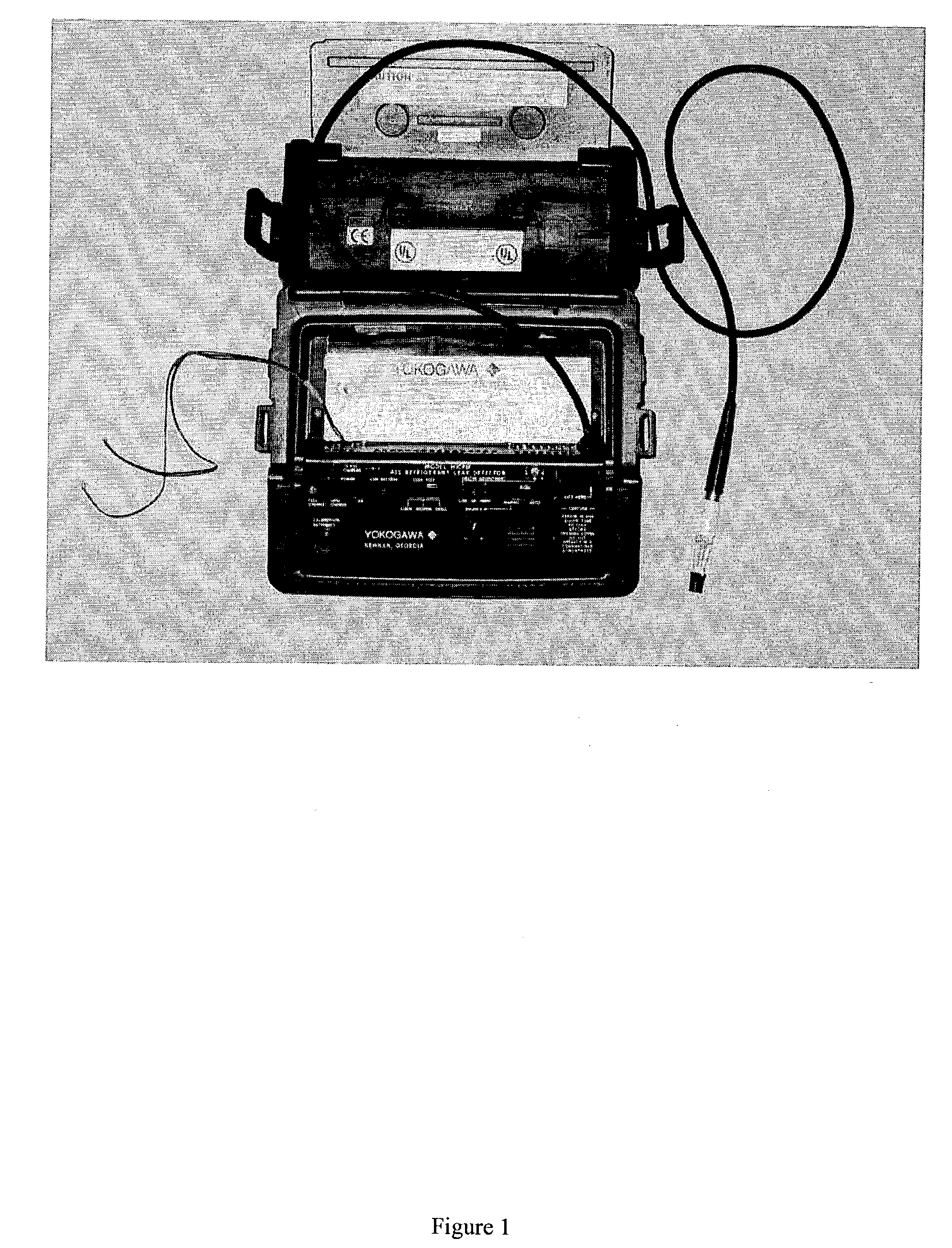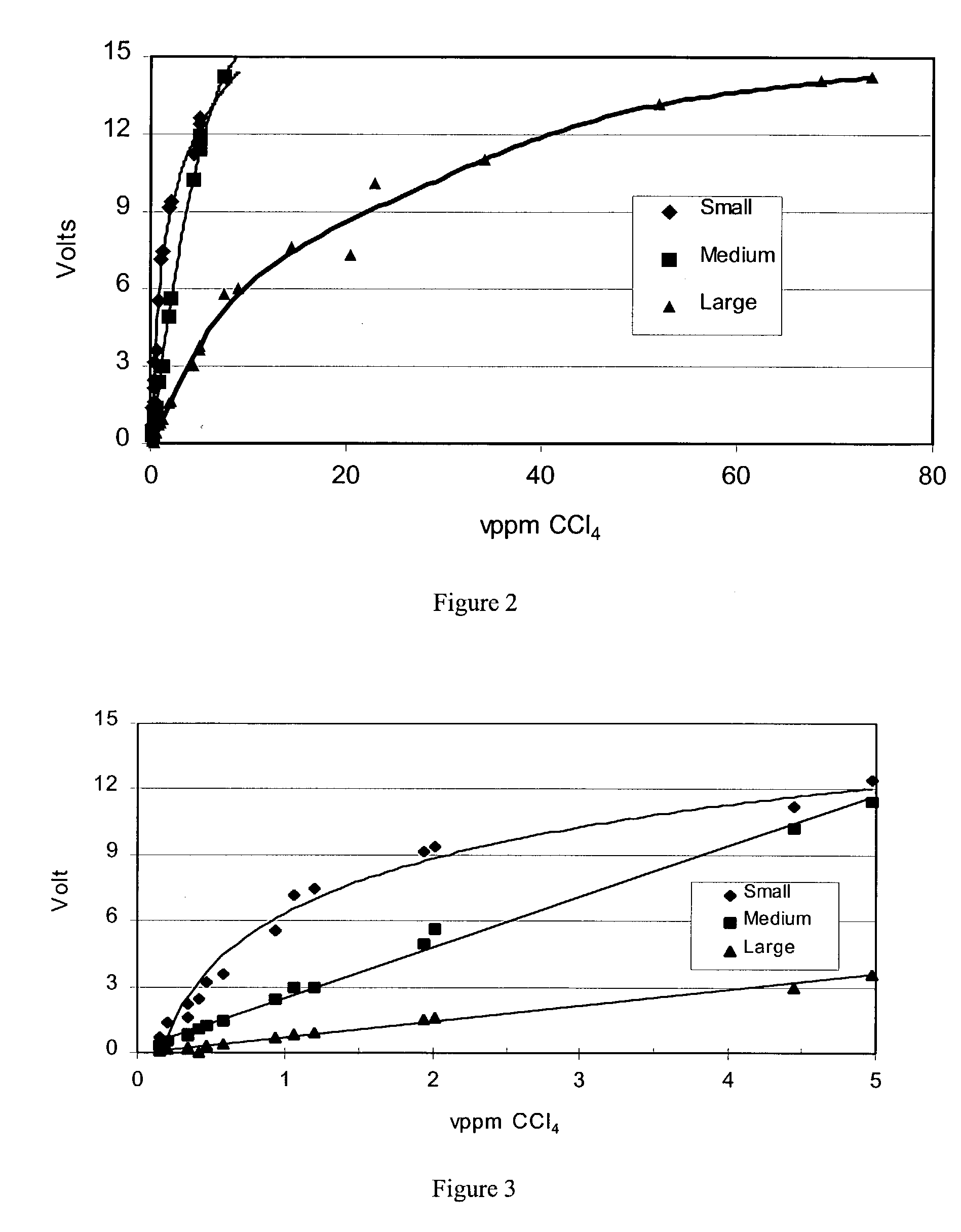Volatile organic compound sensor system
a sensor system and volatile organic compound technology, applied in the direction of instruments, specific gravity measurement, mechanical means, etc., can solve problems such as poor work performance, and achieve the effects of improving signal to noise ratio, operative sensitivity, and evaluating potential calibration of sensor respons
- Summary
- Abstract
- Description
- Claims
- Application Information
AI Technical Summary
Benefits of technology
Problems solved by technology
Method used
Image
Examples
example details
[0046] Chemicals
[0047] Carbon tetrachloride and tetrachloroethylene (perchloroethylene, PCE) were 99.9% ACS reagent grade from Aldrich. Heptane and toluene were reagent grade from VWR. Certified standard solutions of carbon tetrachloride and tetrachloroethylene in methanol at 200 ug / mL were from Supelco.
[0048] Heated Diode Leak Detector
[0049] The heated diode sensor was a model H-10PM refrigerant leak detector from Yokogowa Corp, Newnan, Ga. An internal sampling pump draws air through a heated diode sensor which operates between temperatures ranging from about 600-1000.degree. C. The sensor selectively interacts with halogens present in the volatile organic compounds that it encounters. This is based on positive ion emission technology, wherein halogens cause an ionized current to flow. The device has an on-board sampling pump which operates at two different flow rates, which control the device's sensitivity. The low flow rate provides the most sensitivity, while the highest flow ra...
experiment conclusions
[0074] Experiment Conclusions
[0075] Commercially available heated diode and corona discharge leak detectors were obtained from the manufacturers. These were modified to provide readouts which correspond to the concentration of halogenated VOCs in air. Sensor response was evaluated with carbon tetrachloride. The response characteristics were determined for the VOCs directly in headspace, without soil, in containers such as in Tedlar bags. Quantitation limits were estimated. Potential interferences from volatile hydrocarbons, such as toluene and heptane were evaluated. The effect of humidity was studied also.
1TABLE 5 PID Detectability for Volatile Organic Compounds PID Detectability Compound 10.6 eV 11.7 eV Dichloromethane N Y (Methylene chloride) Trichloroethylene Y Y Tetrachloroethylene Y Y trans-1,2-Dichloroethylene Y Y Trichloromethane N Y (Chloroform) 1,1-Dichloroethane N Y 1,1-Dichloroethylene Y Y 1,1,1-Trichloroethane N Y Toluene Y Y 1,2-Dichloroethane N Y Benzene Y Y o-Xylene ...
PUM
 Login to View More
Login to View More Abstract
Description
Claims
Application Information
 Login to View More
Login to View More - R&D
- Intellectual Property
- Life Sciences
- Materials
- Tech Scout
- Unparalleled Data Quality
- Higher Quality Content
- 60% Fewer Hallucinations
Browse by: Latest US Patents, China's latest patents, Technical Efficacy Thesaurus, Application Domain, Technology Topic, Popular Technical Reports.
© 2025 PatSnap. All rights reserved.Legal|Privacy policy|Modern Slavery Act Transparency Statement|Sitemap|About US| Contact US: help@patsnap.com



